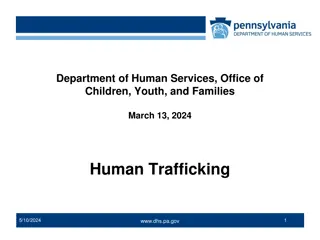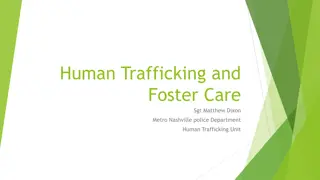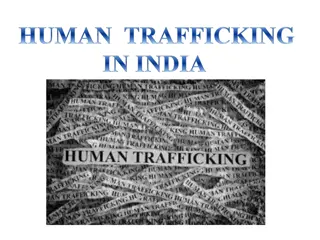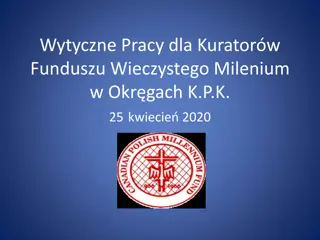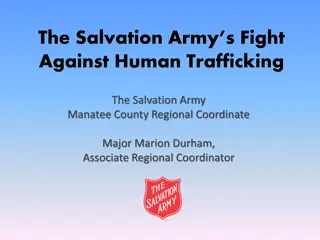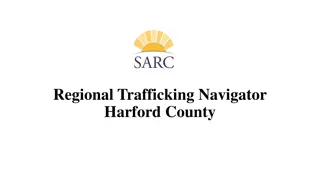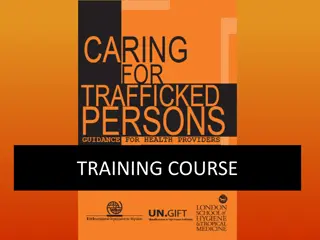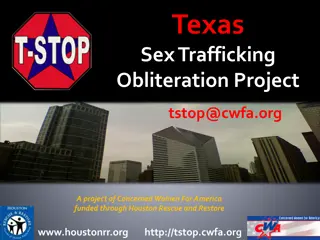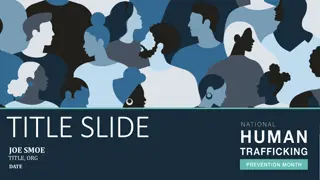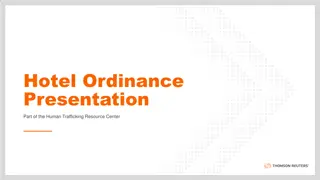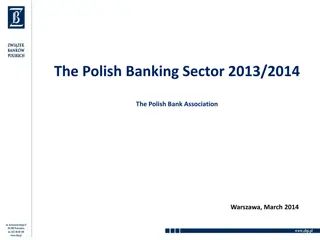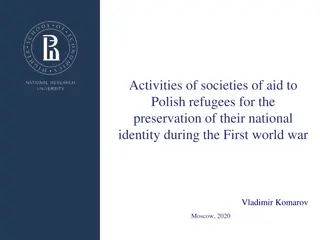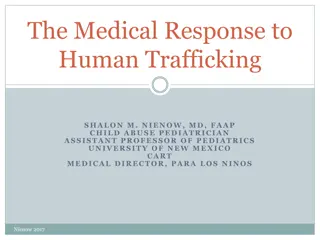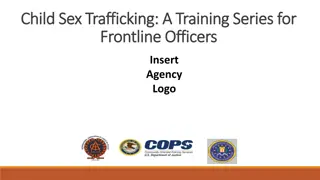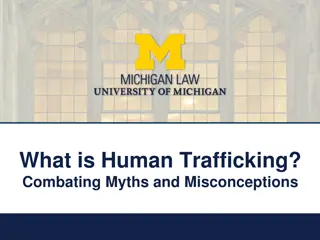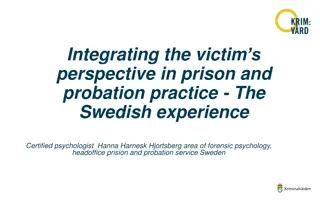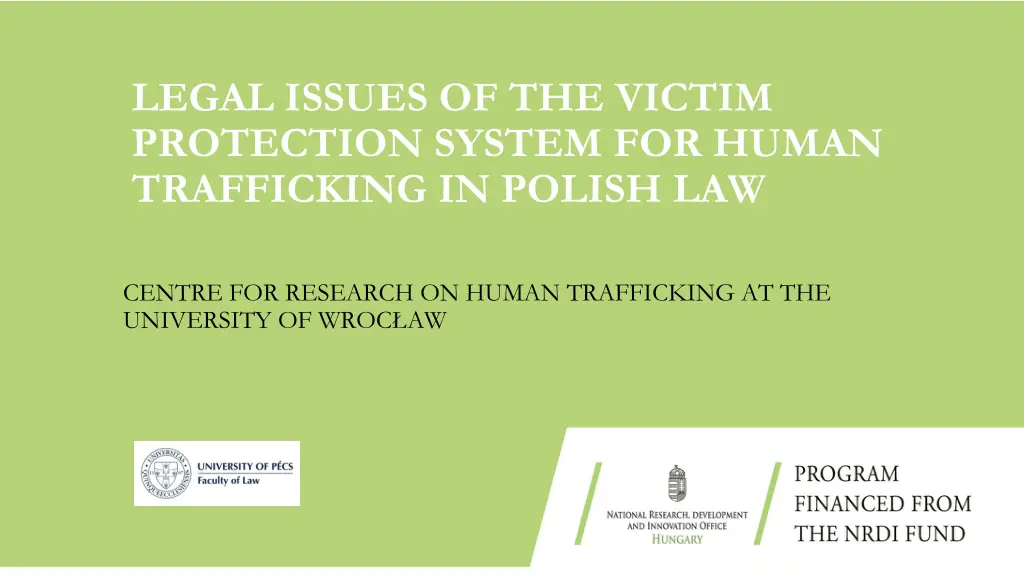
Victim Protection System in Polish Law: Legal Framework & Challenges
Explore the legal issues surrounding victim protection in Poland's human trafficking system, highlighting the fragmented legal framework, gaps in protection, and key legislation aimed at safeguarding victims of trafficking. Discover the current challenges and complexities faced by victims and professionals in navigating the Polish legal system.
Download Presentation

Please find below an Image/Link to download the presentation.
The content on the website is provided AS IS for your information and personal use only. It may not be sold, licensed, or shared on other websites without obtaining consent from the author. If you encounter any issues during the download, it is possible that the publisher has removed the file from their server.
You are allowed to download the files provided on this website for personal or commercial use, subject to the condition that they are used lawfully. All files are the property of their respective owners.
The content on the website is provided AS IS for your information and personal use only. It may not be sold, licensed, or shared on other websites without obtaining consent from the author.
E N D
Presentation Transcript
LEGAL ISSUES OF THE VICTIM PROTECTION SYSTEM FOR HUMAN TRAFFICKING IN POLISH LAW CENTRE FOR RESEARCH ON HUMAN TRAFFICKING AT THE UNIVERSITY OF WROC AW
Introduction In Poland, we observe various forms of trafficking, including sexual exploitation, forced labor, forced begging, and forced criminality. According to statistics several hundred individuals are identified as victims annually, though experts believe the actual numbers to be significantly higher.
What is the main problem? Poland does not have a single, comprehensive anti-trafficking law. Instead, protection guarantees for victims are scattered across more than a dozen different legal acts. This fragmentation leads to significant gaps in victim protection and makes it difficult for both victims and professionals to make effective use of the law.
Current legal framework in Poland Trafficking in people is recruiting, transporting, delivering, transferring, storing or accepting people by using: 1) violence or the unlawful threat of violence, 2) kidnap, 3) deceit, 4) misrepresentation or exploiting an error or inability to properly comprehend a decision, 5) an abuse of a dependence, exploiting a critical position or a state of helplessness, 6) the grant or acceptance of material or personal incentives, or the promise of such to a person with supervision or custody over another person - in order to use them, even with their consent, in particular in prostitution, pornography or other forms of sexual exploitation, for forced work or services, for begging, for slavery or other forms of degrading human dignity, or for obtaining cells, tissues or organs contrary to the provisions of law.
Current legal framework in Poland Key legislation containing elements of victim protection: Criminal Code (Article 189a) - criminalization but limited victim focus Act on Foreigners - residence permits for foreign victims Social Assistance Act - social support provisions Employment laws - labor protection measures Code of Criminal Procedure - procedural protections The National Action Plan Against Trafficking in Human Beings - administrative rather than legislative solution
Critical gaps in the current legal system Absence of a legal definition of forced labor Lack of a comprehensive law addressing all aspects of human trafficking Procedural challenges in victim identification Coordination problems between various institutional stakeholders Limited specialized support services established by law Challenges in reflection period implementation Barriers to compensation for victims
Recommendations for improvement Proposal for a comprehensive Anti- Human Trafficking Act Inclusion of clear forced labor definition in legislation Formalization of the National Referral Mechanism in law Strengthening victim-centered approach in criminal proceedings Enhanced inter-institutional cooperation through legal framework
Implementation challenges and practical considerations While legislative reform is essential, it must be accompanied by adequate resources and implementation measures to be effective. This includes specialized training for all professionals who may come into contact with trafficking victims.
Conclusion The challenges are significant, but with political will, adequate resources, and a concerted effort by all stakeholders, Poland has the opportunity to strengthen its legal framework and establish a truly victim-centered approach to addressing human trafficking.

